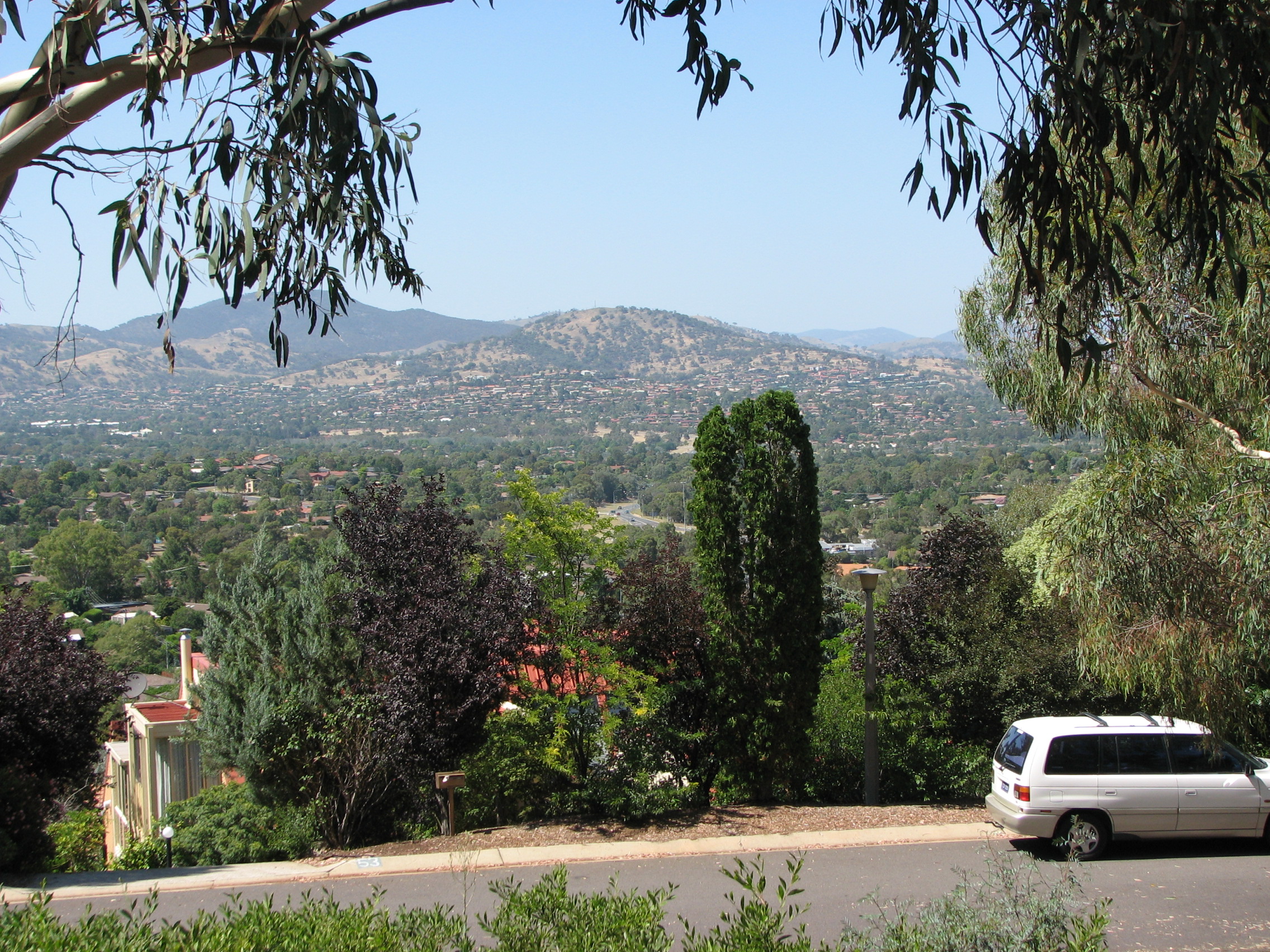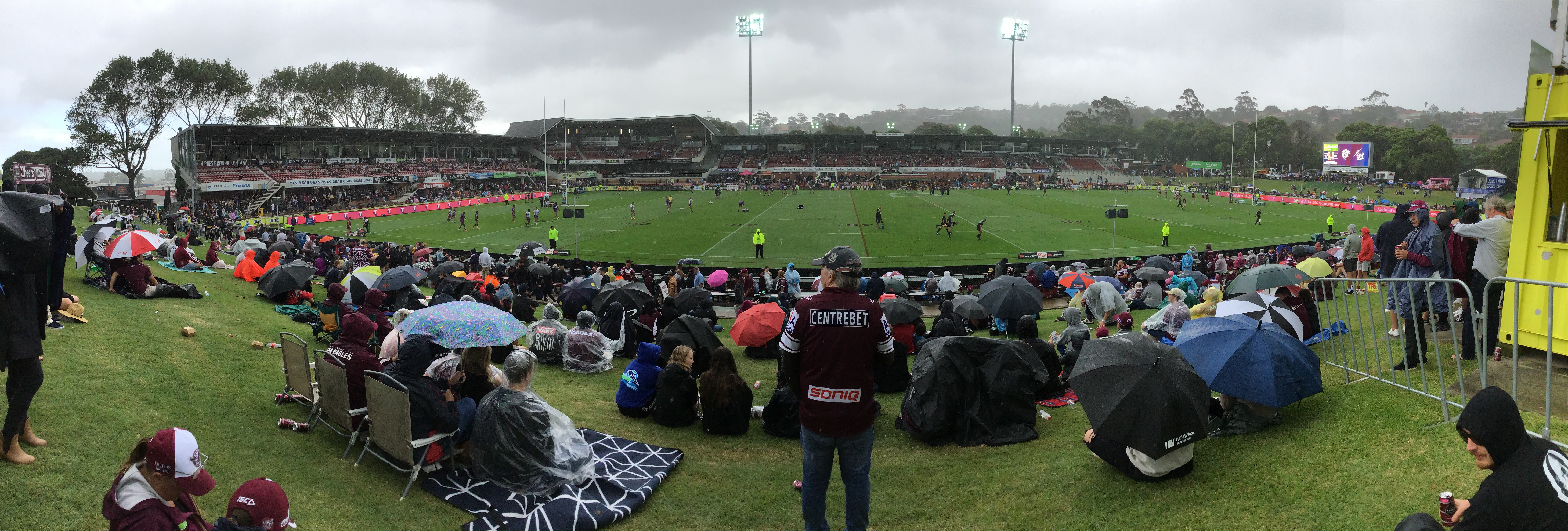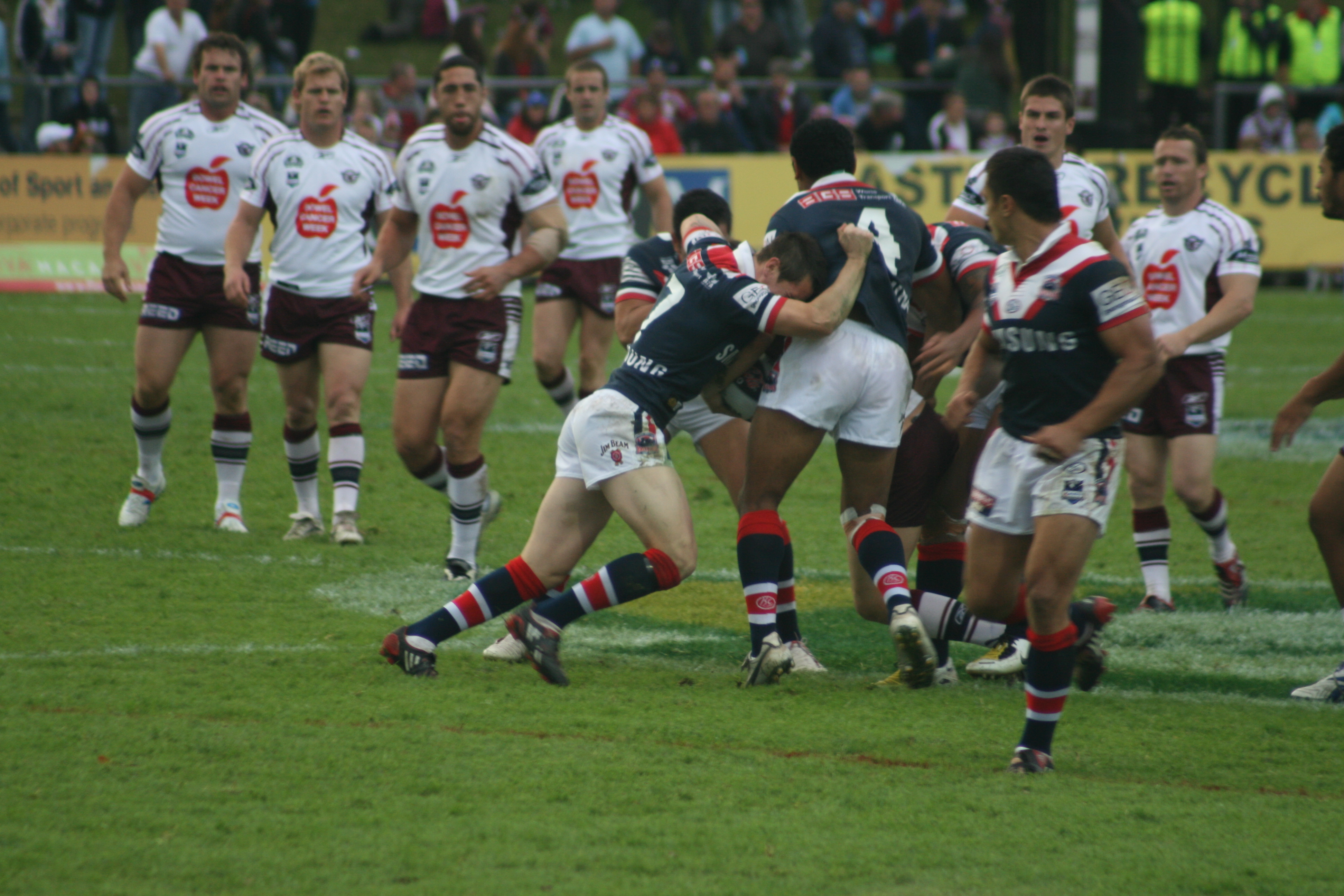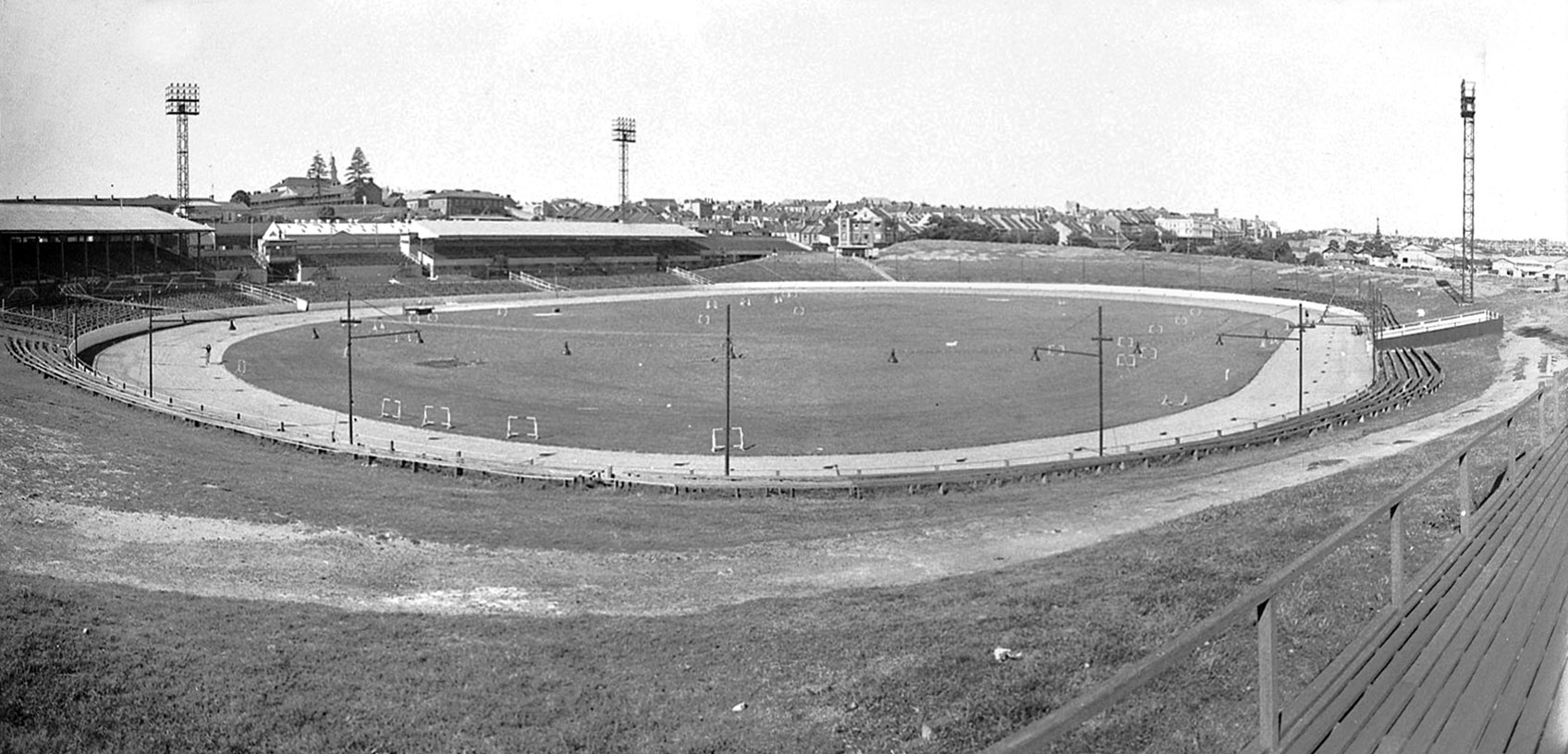|
Brent Kite
Brent Kite (born 7 March 1981) is a former professional rugby league footballer who played in the 1990s, 2000s and 2010s. A Tonga and Australia international, and New South Wales State of Origin representative front-row forward, he played club football for the St. George Illawarra Dragons, Manly Warringah Sea Eagles and Penrith Panthers. Kite was named the Clive Churchill Medallist for his performance in the 2008 NRL Grand Final, in which he helped steer Manly-Warringah to a 40–0 thumping of the Melbourne Storm, scoring a try. Background He was born in Queanbeyan, New South Wales, Australia. Kite is of Tongan descent. Early career And played junior football with the Queanbeyan Blues. He represented the Australian Schoolboys side their tour of New Zealand in 1998. He spent three years with the Canberra Raiders' lower grades sides following his graduation from Erindale College. Professional playing career In late 2000 he travelled to Europe to play for the Tonga nati ... [...More Info...] [...Related Items...] OR: [Wikipedia] [Google] [Baidu] |
Queanbeyan, New South Wales
Queanbeyan ( ) is a city in south-eastern New South Wales, Australia, located adjacent to the Australian Capital Territory in the Southern Tablelands region. Located on the Queanbeyan River, the city is the council seat of the Queanbeyan-Palerang Regional Council. At the , the Queanbeyan part of the Canberra–Queanbeyan built-up area had a population of 37,511. Queanbeyan's economy is based on light construction, manufacturing, service, retail and agriculture. Canberra, Australia's capital, is located to the west, and Queanbeyan is a commuter town. The word ''Queanbeyan'' is the anglicised form of ''Quinbean'' or ''*Kuwinbiyan'', a Ngarigo language, Ngarigo word meaning ''"clear waters"''. History The first inhabitants of Queanbeyan were the Ngambri peoples of the Walgalu Nation. The town grew from a squattage held by ex-convict and inn keeper, Timothy Beard, on the banks of the Molonglo River in what is now Oaks Estate. The town centre of Queanbeyan is located on the Q ... [...More Info...] [...Related Items...] OR: [Wikipedia] [Google] [Baidu] |
Wanniassa, Australian Capital Territory
Wanniassa () (postcode 2903) is a suburb in Australia's capital, Canberra: more specifically, in the city's southern district of Tuggeranong. The suburb takes its name from a pastoral property granted to Thomas McQuoid in 1835, which he named after Wanayasa in Purwakarta Regency, West Java, Indonesia, where McQuoid had previously owned property. Streets are named after Victorian state politicians and the suburb was gazetted on 21 May 1974. It is next to the suburbs of Kambah, Greenway, Oxley, Monash, Gowrie and Fadden. It is bounded by Athllon Drive, Sulwood Drive, Erindale Drive and Taverner Street. Demographics At the , Wanniassa had a population of 7,885. The median age of people in Wanniassa was 39 years, compared to a median age of 35 for Canberra. The median individual income for Wanniassa in 2021 was $1,127, below the Canberra average of $1,203, while the median household income was $2,295. In 2021, the median monthly housing loan repayment in Wanniassa was $2,1 ... [...More Info...] [...Related Items...] OR: [Wikipedia] [Google] [Baidu] |
Manly-Warringah Sea Eagles
The Manly Warringah Sea Eagles are an Australian professional rugby league club based in Sydney's Northern Beaches. They compete in the National Rugby League (NRL). The Manly club debuted in the 1947 New South Wales Rugby Football League season and currently hosts the majority of their home games at fortress Brookvale Oval in Brookvale. They train at the New South Wales Academy of Sport in Narrabeen and their Centre of Excellence in Brookvale. The team colours are maroon and white, and they are commonly known as ''Manly''. The club competed in the NSWRL, ARL, or NRL competitions in all respective seasons from 1947 until 1999. At the end of 1999, they entered into a joint venture with the North Sydney Bears to form the Northern Eagles, which rugby league statisticians regard as a separate club. The Northern Eagles competed in the 2000 and 2001 NRL seasons, after which the joint venture collapsed. The Manly Warringah club (who held the NRL licence) competed in the NRL as t ... [...More Info...] [...Related Items...] OR: [Wikipedia] [Google] [Baidu] |
National Rugby League Season 2005
The 2005 NRL season was the 98th season of professional rugby league football in Australia and the eighth run by the National Rugby League. The lineup of clubs remained unchanged from the previous year, with fifteen teams contesting the 2005 Telstra Premiership, which culminated in a grand final between the Wests Tigers and the North Queensland Cowboys. Season summary In 2005 the NRL's salary cap was $3.25 million for the 25 highest-paid players in a club. The season was statistically the closest season ever, with just sixteen points separating the Parramatta Eels (1st) and Newcastle Knights (15th). It was also notable in that the previous four premiers failed to qualify for the finals ( Bulldogs, Penrith Panthers, Sydney Roosters and Newcastle Knights). In the middle of 2005 the NRL reached a broadcasting rights agreement with Foxsports and Channel 9 worth $500 million over six years, representing a 65% increase in direct television income. The Knights recorded their worst eve ... [...More Info...] [...Related Items...] OR: [Wikipedia] [Google] [Baidu] |
Brookvale Oval
Brookvale Oval, currently known as 4 Pines Park for sponsorship reasons, is a multi-purpose stadium in the suburb of Brookvale, Sydney, New South Wales, Australia. The ground is owned by Northern Beaches Council and is primarily used by the Manly Warringah Sea Eagles in the National Rugby League, with a capacity of 18,000. By the end of the 2023 season, Brookvale had hosted 720 first grade premiership games. History In the late nineteenth century, the suburb of Brookvale was known as Greendale. The name Brookvale was later adopted as that was the name of the home built by the original grantee of the land, William Francis Parker. It was in this area that Dan Farrell built his stone house called "Inverness" which was later to become Manly Leagues Club. The area known as Lot 47 A (Land Titles Office Vol. 1524 Fol. 122) was sold to Jane Malcolm in April 1907. Land title records suggest that between 1907 and 1911, Malcolm carried out a subdivision of Lot 47A into four blocks. ... [...More Info...] [...Related Items...] OR: [Wikipedia] [Google] [Baidu] |
Manly Sea Eagles
The Manly Warringah Sea Eagles are an Australian professional rugby league club based in Sydney's Northern Beaches. They compete in the National Rugby League (NRL). The Manly club debuted in the 1947 New South Wales Rugby Football League season and currently hosts the majority of their home games at fortress Brookvale Oval in Brookvale, New South Wales, Brookvale. They train at the New South Wales Academy of Sport in Narrabeen and their Centre of Excellence in Brookvale. The team colours are maroon and white, and they are commonly known as ''Manly''. The club competed in the NSWRL, ARL, or NRL competitions in all respective seasons from 1947 until 1999. At the end of 1999, they entered into a joint venture with the North Sydney Bears to form the Northern Eagles, which rugby league statisticians regard as a separate club. The Northern Eagles competed in the 2000 and 2001 NRL seasons, after which the joint venture collapsed. The Manly Warringah club (who held the NRL licence) com ... [...More Info...] [...Related Items...] OR: [Wikipedia] [Google] [Baidu] |
2004 State Of Origin Series
The 2004 State of Origin series was the 23rd time that the annual three-game series between the Queensland and New South Wales representative rugby league football teams was contested entirely under ' state of origin' selection rules. A pre-series Blues mobile phone scandal, Brad Fittler's comeback, a Golden point outcome in Game I and an extraordinary Billy Slater try showed that State of Origin's ability to create memorable football moments was as strong as ever after 25 years of the concept. The New South Wales' Game III victory saw a match-up in the respective cumulative tallies at 35 wins apiece, continuing a recurring trend where any push toward dominance by one side is soon countered by the other. The Ron McAuliffe Medal for Queensland player of the series was awarded to Steve Price. Game I New South Wales players Anthony Minichiello and Mark Gasnier were dropped following a drunken incident during the Blues' training camp when it was made public that Gasnier had lef ... [...More Info...] [...Related Items...] OR: [Wikipedia] [Google] [Baidu] |
New South Wales Rugby League Team
The New South Wales rugby league team has represented the Australian state of New South Wales in rugby league football since the sport's beginnings there in 1907. Also known as the Blues due to their sky blue jerseys, the team competes in the annual State of Origin series against Queensland. The team is currently coached by Laurie Daley and captained by Isaah Yeo, and is administered by the New South Wales Rugby League. Prior to 1980 when the "state of origin" selection criteria was introduced, the New South Wales team, in addition to playing annually against Queensland, played matches against foreign touring sides and occasionally toured overseas themselves. Their home stadium is Accor Stadium in Sydney, the largest stadium in the state, having been constructed for the 2000 Summer Olympics. History Pre-Origin era (1907–1980) The New South Wales rugby league team pre-dates the Australian national team, playing their inaugural match against a rebel New Zealand rugby tea ... [...More Info...] [...Related Items...] OR: [Wikipedia] [Google] [Baidu] |
Country Origin
The Country New South Wales rugby league team is a representative rugby league football team. Between 1987 and 2017 there were two tiers: the Origin team that consisted of professional players who originated from clubs of the Country Rugby League and a representative team of amateur and semi-professional players. The Country Origin team played annually in the City vs Country Origin competition against the City New South Wales rugby league team, which was made up of players originating from Sydney. This match was discontinued in 2017. The representative team has played in a number of formats over the years: quad and tri series, annual fixtures and tour matches. The most recent change is the introduction of an Under 23 age limit to the top representative team. The Country Rugby League was absorbed by the New South Wales Rugby League at the end of 2019. The NSWRL continued to run competitions for country regions in February and March 2020 until they were curtailed by lockdown rest ... [...More Info...] [...Related Items...] OR: [Wikipedia] [Google] [Baidu] |
St George Illawarra Dragons
The St. George Illawarra Dragons are an Australian professional rugby league football club, representing both the Illawarra and St George regions of New South Wales. The club has competed in the National Rugby League (NRL) since 1999 after a joint-venture was formed between Sydney's St. George Dragons (est. 1921) and Wollongong's Illawarra Steelers (est. 1982). The club officially formed as the game's first joint-venture club on 23 September 1998 and remains the only inter-city team in the NRL. The team has its headquarters and leagues clubs in both Wollongong and the Sydney suburb of Kogarah, and trains and plays games regularly at WIN Stadium in Wollongong, as well as at Jubilee Oval in Kogarah. From 1999 to 2006 the club was jointly owned by the St. George Dragons 50% and Illawarra Steelers 50%. In 2006 WIN Corporation purchased 50% of the Illawarra Steelers stake in the club before purchasing the rest of the Illawarra Steelers' share in August 2018. The Dragons reached ... [...More Info...] [...Related Items...] OR: [Wikipedia] [Google] [Baidu] |
Rugby League Positions
A rugby league team consists of 13 players on the field, with 4 interchange players on the bench. Each of the 13 players is assigned a position, normally with a standardised number, which reflects their role in attack and defence, although players can take up any position at any time. Players are divided into two general types, forwards and backs. Forwards are generally chosen for their size and strength. They are expected to run with the ball, to attack, and to make tackles. Forwards are required to improve the team's field position thus creating space and time for the backs. Backs are usually smaller and faster, though a big, fast player can be of advantage in the backs. Their roles require speed and ball-playing skills, rather than just strength, to take advantage of the field position gained by the forwards. Typically forwards tend to operate in the centre of the field, while backs operate nearer to the touch-lines, where more space can usually be found. Names and numbering ... [...More Info...] [...Related Items...] OR: [Wikipedia] [Google] [Baidu] |
Sydney Football Stadium (1988)
The Sydney Football Stadium, commercially known as Allianz Stadium and previously Aussie Stadium, was a football stadium in the Moore Park suburb of Sydney, New South Wales, Australia. Built in 1988 next to the Sydney Cricket Ground, the stadium was Sydney's premier rectangular field venue for rugby league, rugby union and football. Australia's national football teams, the Kangaroos, the Wallabies, and the Socceroos occasionally played at the stadium, while the Eastern Suburbs/Sydney City/Sydney Roosters, NSW Waratahs, and Sydney FC were the ground's major tenants. The stadium usually held both National Rugby League semi finals and one preliminary final, and also held the annual pre-season Charity Shield football match between South Sydney and St George Illawarra for a number of years. It hosted all New South Wales Rugby League/Australian Rugby League rugby league grand finals, as well as the first grand final under the NRL banner, between 1988 and 1998. The NSW Gov ... [...More Info...] [...Related Items...] OR: [Wikipedia] [Google] [Baidu] |






